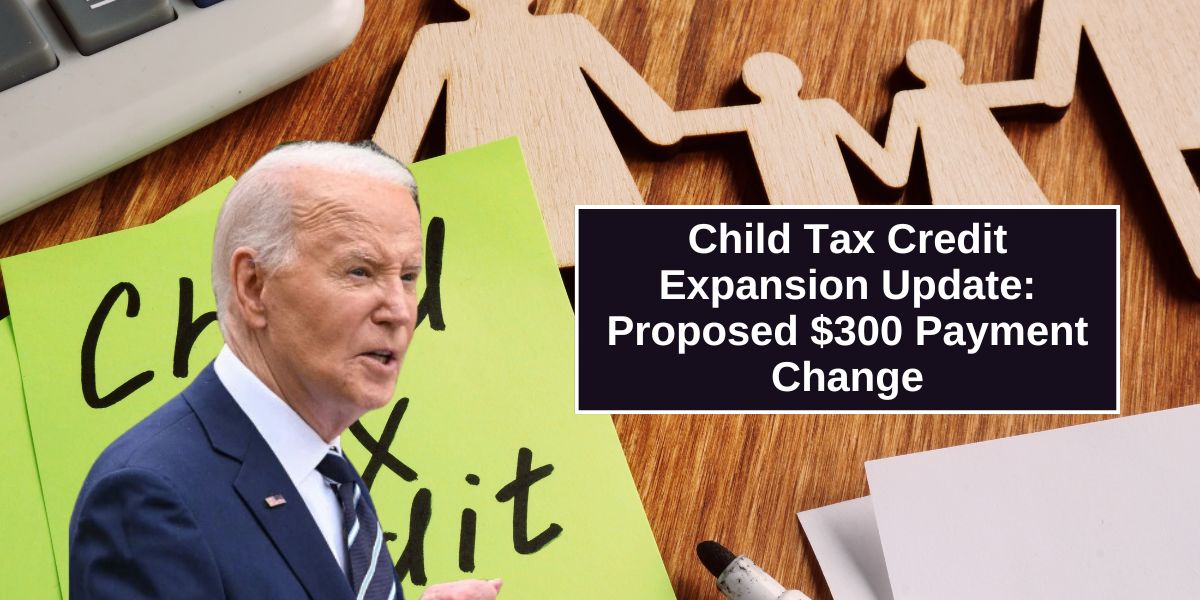As the end of 2024 approaches, President Joe Biden has reignited discussions about child tax credits, aiming to make this policy a permanent fixture in the American economic landscape. This move comes in the wake of heightened concerns among low-income families and individuals with disabilities who rely heavily on Social Security payments. The proposal underscores Biden’s commitment to reducing child poverty and making child care more affordable. This blog post explores the implications of Biden’s plan, its historical context, and the broader impact on American families and the economy.
Table of Contents
The Importance of Child Tax Credits
Child tax credits have long been a vital tool in supporting low-income families. They provide direct financial assistance, helping to alleviate the financial burdens of raising children. The concept is simple: families receive tax credits that reduce their taxable income, leading to significant savings. This support becomes especially critical in times of economic distress or when navigating the costs associated with child care.
| Dwp Universal Credit News 2024 |
| Snapchat Class Action Settlement 2024 |
| Social Security Disability Benefits Pay Chart 2024 |
| Australia Minimum Pension |
| 1907 Social Security |
The American Rescue Plan and the Enhanced Child Tax Credit
In 2021, President Biden’s American Rescue Plan significantly enhanced the child tax credit, marking a pivotal moment in U.S. economic policy. The enhanced credit was introduced as part of the stimulus efforts aimed at mitigating the economic impact of the COVID-19 pandemic. Here’s a snapshot of the key features of this initiative:
| Feature | Details |
|---|---|
| Enhanced Credit | Increased to $3,600 per child under 6 years and $3,000 per child aged 6-17 years |
| Monthly Payments | Provided $300 per child per month for children under 6, and $250 per month for older children |
| Eligibility | Expanded to include more low-income families and individuals |
| Duration | Implemented for the year 2021 |
This enhancement aimed to provide immediate relief and stimulate economic recovery by putting more money into the pockets of families.
The Positive Impact of the Enhanced Child Tax Credit
The enhanced child tax credit had a notable impact on American families. According to data from the U.S. Census Bureau, the introduction of this credit led to a significant reduction in child poverty, bringing it to record lows. This was a clear indication of the policy’s effectiveness in providing crucial support to those in need.
During a speech in Nevada, President Biden highlighted the link between accessible child care and economic growth. He stated, “What happens when people don’t have to worry about what’s gonna happen to their child if they go to work, they have child care? The economy grows.” Biden emphasized that when families are relieved from the burden of child care costs, they are better positioned to contribute to economic growth through increased productivity and financial stability.
The Setback: Expiration of the Enhanced Credit
Despite its success, the enhanced child tax credit was not extended beyond 2021. This lapse occurred due to legislative challenges and the inability of Congress to reach an agreement on extending the program. As a result, families who had benefited from the credit faced uncertainty and financial strain once again.
The Rise in Child Poverty
The lapse in the enhanced credit was followed by a troubling rise in child poverty rates. The U.S. Census Bureau reported a doubling of child poverty in the subsequent year, highlighting the urgent need for sustained support. This increase underscored the critical role of the child tax credit in mitigating economic hardship and providing stability for families.
Biden’s Commitment to Reintroducing and Sustaining the Child Tax Credit
President Biden has expressed a strong desire to reinstate and permanently sustain the child tax credit. This commitment aligns with his broader goal of expanding economic opportunities for American families. Biden has reiterated the importance of making child care more affordable, emphasizing its role in promoting economic stability and growth.
Here’s a summary of Biden’s key points on the child tax credit:
| Key Point | Details |
|---|---|
| Reinstatement | Biden aims to reinstate the enhanced child tax credit |
| Permanency | Focus on making the credit a permanent fixture |
| Economic Impact | Highlights the correlation between affordable child care and economic growth |
| Child Poverty | Aims to reduce child poverty through financial assistance |
State-Level Responses to the Child Tax Credit
In the absence of federal action, several states have taken independent measures to support families through child tax credits. As of now, fourteen states have implemented their own versions of the child tax credit, while 31 states, along with the District of Columbia and Puerto Rico, have enacted similar measures. This grassroots response demonstrates a commitment at the state level to address the needs of families and mitigate the impact of rising child poverty.
The Path Forward: What to Expect
President Biden’s commitment to reintroducing and sustaining the child tax credit reflects a broader vision of economic inclusivity and support for low-income families. By prioritizing affordable child care and financial assistance, Biden aims to create a more stable and prosperous future for all Americans.
Key considerations for the future include:
- Legislative Action: Advocates and policymakers will need to work together to ensure the reinstatement and continuation of the child tax credit.
- Economic Impact: Continued analysis will be necessary to assess the long-term effects of the child tax credit on child poverty and economic growth.
- State-Level Support: States may continue to play a crucial role in providing financial assistance and addressing gaps left by federal policies.
Conclusion
As we navigate the complexities of economic policy and social support systems, the child tax credit remains a vital tool for improving the lives of low-income families. President Biden’s focus on reintroducing and permanently sustaining this policy reflects a commitment to addressing child poverty and promoting economic stability. By making child care more affordable and providing direct financial support, Biden’s administration aims to foster a more inclusive and equitable economic environment.
The enhanced child tax credit of 2021 proved to be a significant step in the right direction. However, the recent rise in child poverty highlights the ongoing need for robust support systems. As discussions continue, it is crucial for policymakers to remain focused on creating lasting solutions that ensure economic security and opportunity for all American families.






